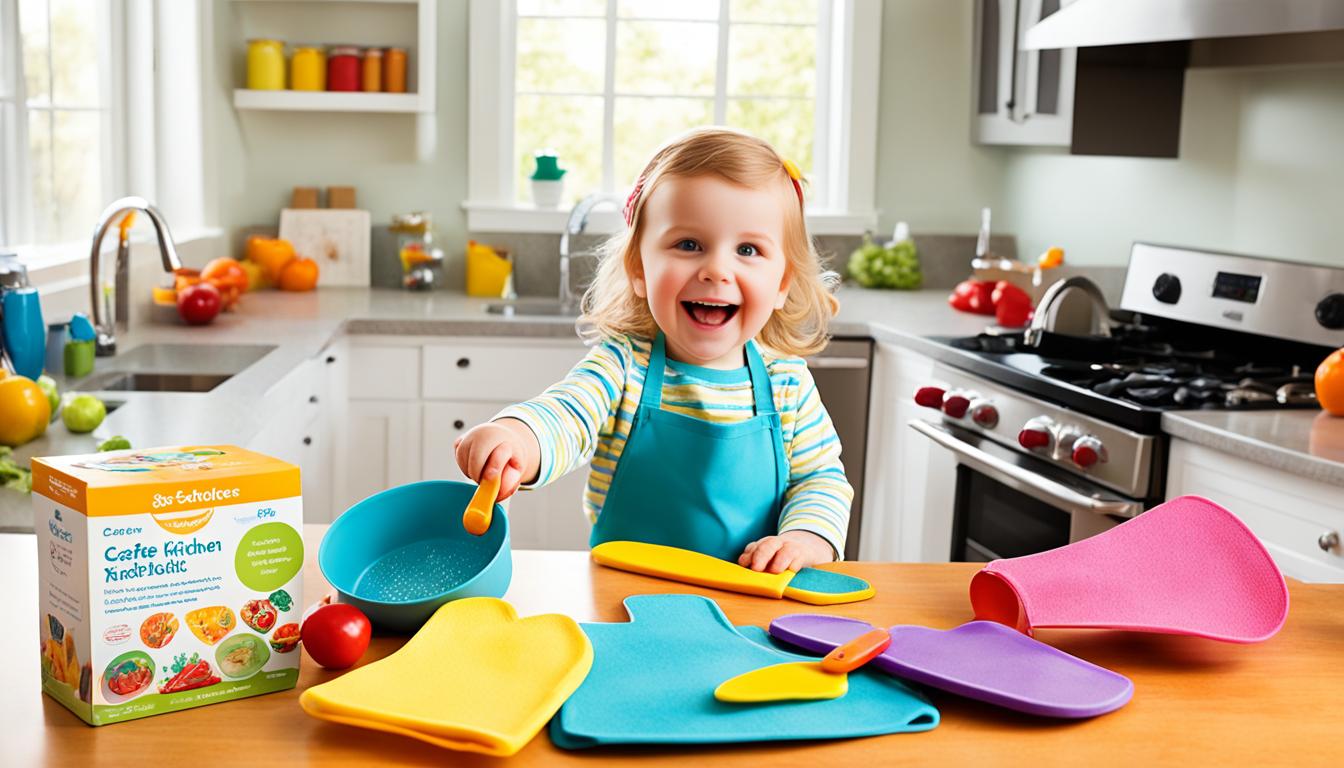Accidents can happen in the kitchen, but by following some basic safety measures, we can help kids avoid burns and cuts. It is important to be mindful and take precautions to create a safe environment in the kitchen. Here are some kitchen safety basics for kids to prevent injuries and promote a safe cooking experience.
Have you ever wondered how to keep your kids safe in the kitchen while they explore the joy of cooking?
Understand the Risks and Stay Organized
When it comes to kitchen safety for children, understanding the potential risks and taking preventative measures is essential. High temperatures, sharp tools, inattention, and inexperience are all factors that can contribute to accidents and injuries in the kitchen. We need to stay organized and create a safe environment to minimize the chances of mishaps.
To promote kitchen safety for children, it’s important to keep our kitchens clean and clutter-free. By eliminating unnecessary items and maintaining an organized workspace, we can minimize the risk of accidents. Ensure that utensils and tools are easily accessible, reducing the need to search for them and decreasing the chances of injuries due to mishandling or disorganization.
By understanding the risks and staying organized, we can create a safer cooking environment for children. Let’s take the necessary steps to prevent accidents and ensure that kitchen safety basics are followed at all times.
Teach Safe Knife Handling and Burn Prevention
When it comes to kitchen safety, one of the most crucial skills to teach children is safe knife handling. Always supervise them when using knives and demonstrate the proper grip and technique. By instilling these habits early on, we can help prevent accidents and ensure that they develop good knife skills.
Preventing burns is another important aspect of kitchen safety. Encourage children to use oven mitts or potholders when handling hot items, especially when removing dishes from the oven or stovetop. Remind them to turn pot handles inward to prevent spills and to be cautious around steam. Educating children about the dangers of hot surfaces and steam is essential to avoiding burns while cooking.
Teaching children about knife safety and burn prevention not only keeps them safe in the kitchen but also equips them with valuable life skills. By following these guidelines, we can establish a strong foundation for kitchen safety and empower children to become confident and responsible cooks.
Use the Right Tools and Practice Safe Food Handling
In order to prioritize kitchen safety for kids, it is essential to ensure that they have access to the right tools and practice safe food handling. By doing so, we can minimize the risk of accidents and promote a safer cooking experience.
Invest in Quality Kitchen Tools
Having the appropriate utensils and equipment is crucial for kitchen safety. Make sure to invest in quality kitchen tools, including knives, that are suitable for children. Easy safety rules for kids in the kitchen include using age-appropriate utensils and tools that are easy to hold and handle. Teaching kitchen safety to children includes educating them about the proper use and care of these tools to prevent accidents.
Store Tools Safely
Proper storage of kitchen tools is just as important as using the right ones. Ensure that knives and other sharp objects are stored in secure and child-proof areas, out of the reach of children, to prevent accidents. Important kitchen safety precautions for kids involve keeping utensils organized and stored away safely. This way, children won’t accidentally come into contact with sharp objects.
Practice Safe Food Handling
Safe food handling is a fundamental aspect of kitchen safety for kids. Teach children the importance of washing their hands thoroughly before and after handling food. This simple practice helps to prevent the spread of germs and foodborne illnesses. Additionally, instruct kids to cook meat to the correct temperature to ensure that it is safe to consume. Teaching them to avoid cross-contamination when handling raw and cooked foods is also essential.
The right tools and safe food handling practices are indispensable when it comes to kitchen safety for kids. By providing them with suitable utensils and teaching them how to handle food safely, we can help teach kitchen safety to children and reduce the risk of accidents or injuries. By following these important kitchen safety precautions for kids, we create a safer cooking environment and instill good habits from an early age.
Be Mindful of Children and Pet Safety and Emergency Response
When cooking with kids, it is crucial to prioritize their safety at all times. Keep hot dishes and sharp objects out of their reach to prevent burns and cuts in the kitchen. Educate them about the dangers of the stove, knives, and hot surfaces, emphasizing the importance of caution.
In case of any accidents, it is essential to have a well-stocked first aid kit readily available in the kitchen. Familiarize yourself with the appropriate response for burns and cuts, and seek medical assistance when necessary. Knowing how to effectively address injuries is vital in maintaining a safe cooking environment for everyone.
Furthermore, it is important to have a fire safety plan in place and ensure that everyone in the household understands it. Teach your children how to use a fire extinguisher safely and effectively in case of a kitchen fire. Being prepared for emergencies and having the necessary safety measures in place significantly reduces the risk of any severe incidents.
By prioritizing child and pet safety, as well as knowing how to respond in emergencies, we can establish a safer cooking experience for the entire family. Implementing these kid-friendly kitchen safety guidelines and preventative measures will create an environment where everyone can enjoy cooking together while minimizing the risk of burns, cuts, and other kitchen accidents.
